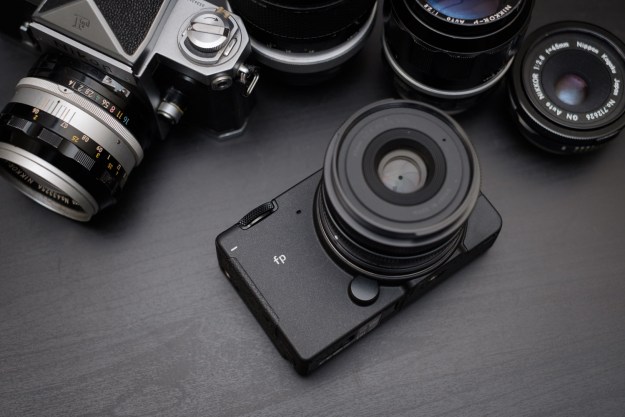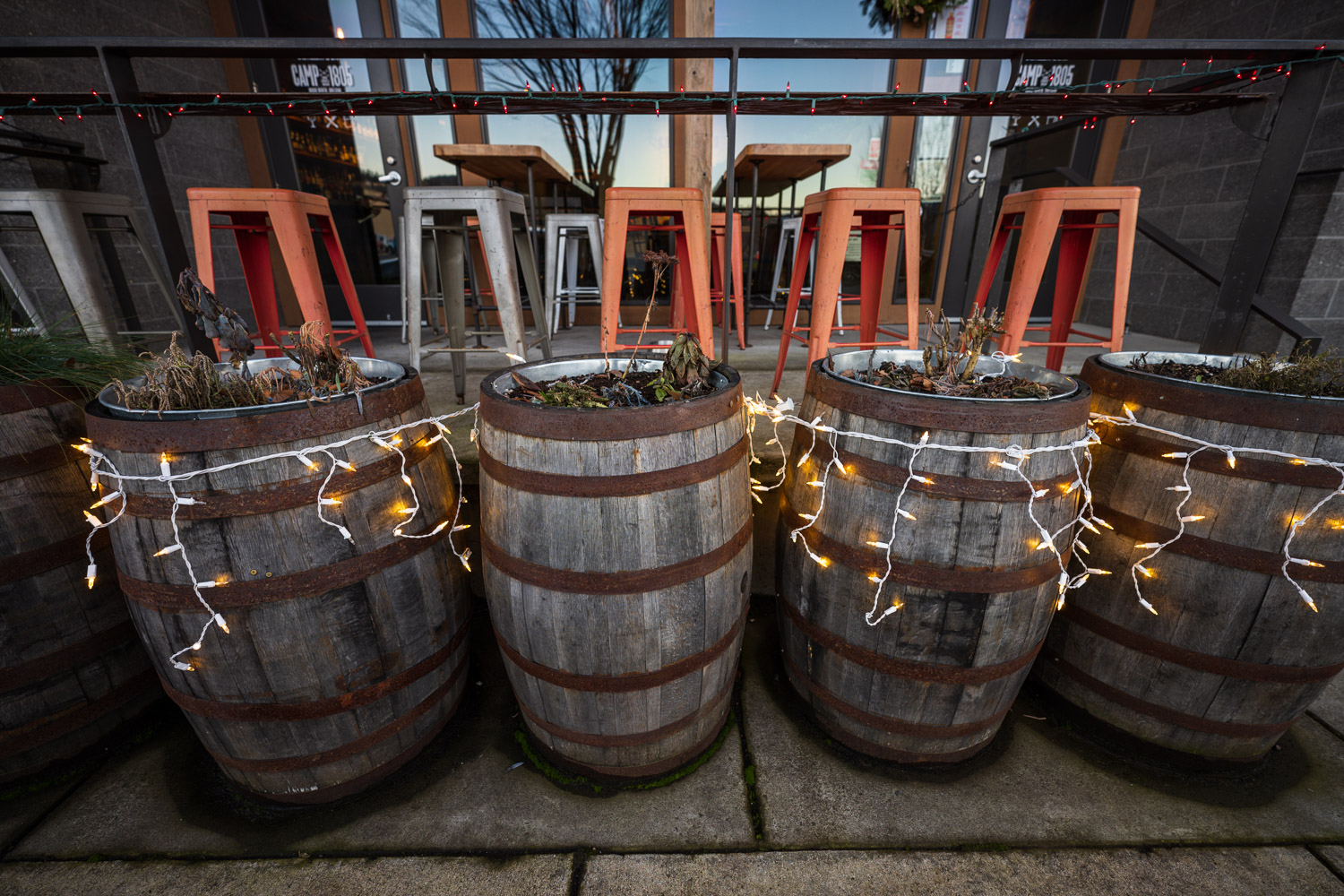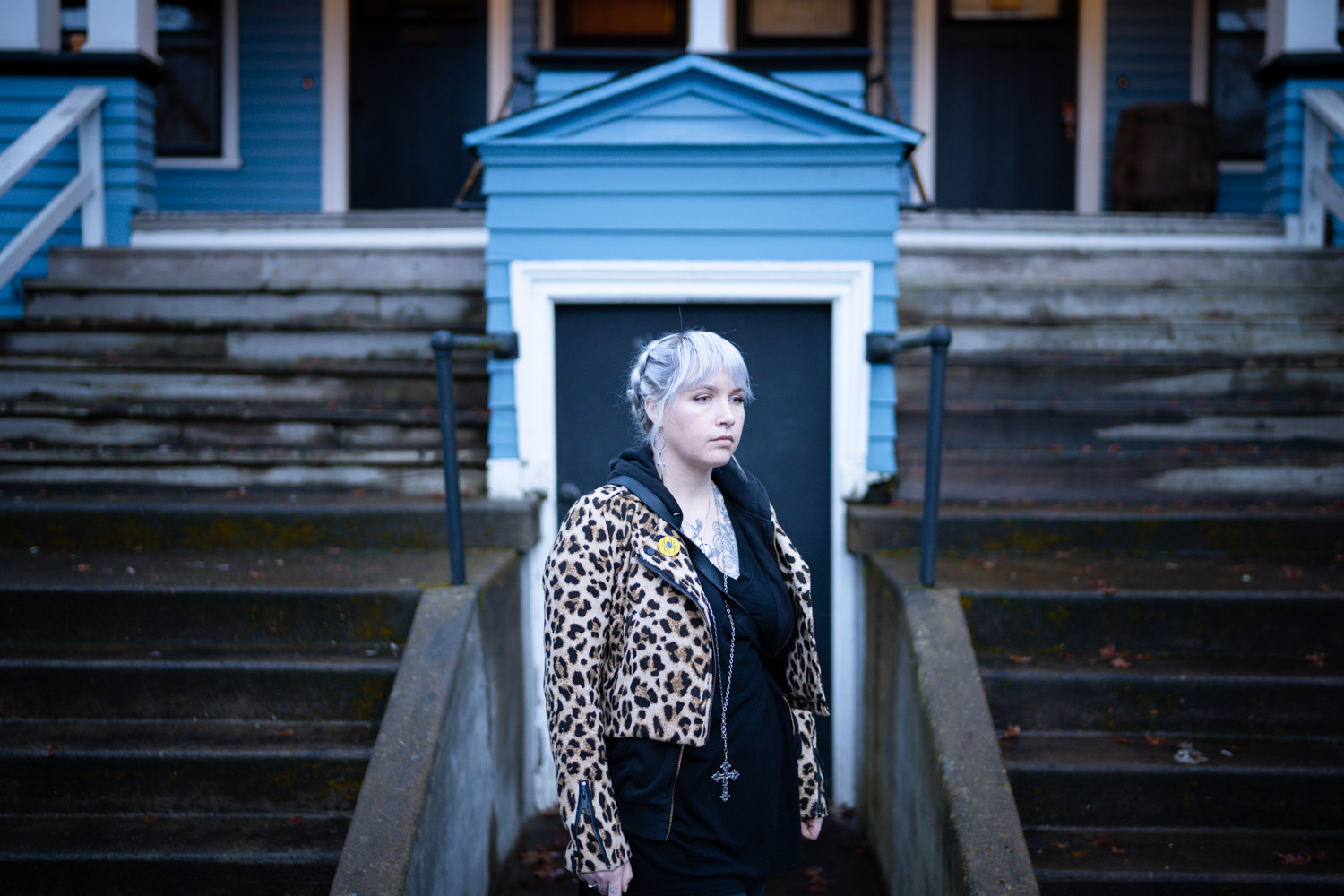
“Mini but mighty, Sigma's Fp isn't afraid to stand out by being different.”
- Ultra-compact design
- Excellent build quality
- RAW video
- 24MP full-frame sensor
- Relatively inexpensive
- No mechanical shutter
- No built-in viewfinder or hot shoe
- Contrast-detection-only autofocus
- Poor battery life
Sony. Canon. Nikon. Panasonic. Leica. Five companies were making full-frame mirrorless cameras before Sigma entered the fray with the Fp. It is a highly competitive arena. So how can Sigma hope to stand out?
Apparently, by building a very weird camera.
The Sigma Fp is a different breed. Inside and out, it doesn’t adhere to the design standards of other manufacturers. Despite this, or because of it, the Fp is one of the most intriguing cameras on the market. Depending on your point of view, it is either a miniature marvel or a frustrating flop. It will appeal most to videographers, but for the purpose of this review, I’ll be looking at the Fp primarily as a still camera.
The Fp can’t do a lot of things other cameras in the $2,000 price range can. But it also can do things others can’t. It doesn’t have a viewfinder or mechanical shutter, for example, but it does shoot RAW video and offer a computational low ISO of 6. Yes, ISO 6. This makes it a tricky camera to rate in comparison to its peers, since it doesn’t seem to directly compete within its own price group.
Maybe it doesn’t even have peers, but calling it “peerless” seems too strong a compliment. It is certainly unique, though, and that’s exciting.
Design and specifications
Let me backtrack a moment. It is not entirely fair to say the Fp doesn’t adhere to any design standards, as it does embrace two that help give it a foothold.
One, it uses the Leica L mount as opposed to Sigma’s own SA mount, making it compatible with a number of lenses from Leica and Panasonic in addition to Sigma’s own.
Two, it uses a regular 24.6-megapixel Bayer sensor instead of the Foveon X3 chip of previous Sigma cameras, like the SD Quattro H. I hope to see Foveon development continue as it offers advantages for certain still photography applications, but the switch was necessary to give the Fp such strong video capabilities.

The Fp looks and feels like a small, matte black brick. Measuring 4.4 x 2.6 x 1.8 inches and weighing a hair under 15 ounces, it’s the smallest and lightest full-frame camera. Sigma made sacrifices to get to that size, but not in build quality. The camera feels like it could survive anything short of a direct nuclear strike. A few different grips are available to improve ergonomics.
Sprouting between the body and the LCD screen is a ribbed pattern that runs along the edge of the camera. This isn’t a design statement, but a heat sink. This keeps the camera in its optimum temperature range even when recording long takes of RAW video. Despite the exposed heat sink, the camera is fully weather sealed.
However, there’s some bad news. The Sigma Fp lacks an electronic viewfinder, the touchscreen is fixed, and the shoe mount is not built-in, but rather a screw-on attachment that sticks out to the side of the camera.

I found all this forgivable, but there is one thing the Fp lacks that can’t be ignored: a mechanical shutter. Without one, distortion from the electronic rolling shutter is a constant threat when panning or shooting fast-moving subjects. Worse, it means flash sync speed is limited to just 1/30 second for JPEG and only 1/15 for RAW. If you ever shoot with flash, whether on or off-camera, the Fp isn’t going to work for you.
In fact, looking at its specs, I doubt Sigma intended the Fp to be much of a still camera. It can shoot bursts up to 18 frames per second, but only for 24 frames. It uses a contrast-detection-only autofocus system with 49 points, and it’s not a “fancy” type of contrast detection like the Depth from Defocus tech in Panasonic L-mount cameras. Due to the ultra-compact build, it also has a small, 1,200mAh battery. Sigma doesn’t state the battery life, but after about 50 exposures, the indicator dropped to 50%. I was probably reviewing photos more frequently than the average person, which could have contributed to rapid decline — and the indicator is likely not 100% accurate — but I still wouldn’t expect more than a couple hundred shots per charge.

On the video front, however, the news is better. The camera records internal RAW video in the Adobe CinemaDNG format at up to 24 fps in 4K, or 60 fps in Full HD. 4K RAW is limited to 8-bit internally, but 12-bit output over USB-C straight to an SSD is supported. Full HD can be recorded up to 12-bit internally. In addition to RAW, the Fp can also shoot .MOV video at 440 megabits per second in
A few features currently missing are planned for a future firmware update. These include in-camera playback of CinemaDNG files, RAW output over HDMI, and a log profile for preserving more dynamic range in .MOV recording.
As a video camera, the Fp could very well be a game changer.
User experience
Shooting with the Sigma Fp is fun. Paired with the 45mm F2.8 pancake lens, it feels more like shooting a point-and-shoot than a full-frame mirrorless camera. It’s a refreshing experience, especially in the L-mount realm, where other cameras are known for their bulk (the Lumix S series cameras weigh more than most DSLRs; the Leica SL2 isn’t far behind).

Of course, that changes when you mount a larger lens to the Fp. In addition to the 45mm, I also tested the new 14-24mm F2.8 Art and 35mm F1.2 Art. While these are part of Sigma’s new, mirrorless-specific “DN” line, they are considerably larger than the Fp. The 14-24 is impressively compact for what it is, much more so than the older DSLR version, but it’s still hefty. The 35mm F1.2 is comically large.
Performance is adequate, but not great. For portraiture and other static subjects, autofocus works fine. Eye-detection gave me accurate focus when shooting wide open on the 35mm F1.2. It also works well in low light. Sigma says it’s good to -5 EV, though that depends on the amount of contrast in your subject.
However, compared to the phase-detect autofocus in cameras from Sony, Canon, and Nikon, the Fp is slow and inconsistent. Quick shots are difficult as a result.

Ergonomics and autofocus matter less in video production. Videographers will love how adaptable this camera is, both to different lenses and different environments. Extra 1/4-inch threads on each side allow you to mount the camera to a tripod vertically or attach additional accessories straight to it. It’s well-suited to aerial work since its light frame should make it easy to mount to a drone. I imagine it will also find use as a crash cam. You could stick it anywhere on a car, and it might just be strong enough to survive the impact.
While Sigma sees this camera being used by everyone from vloggers to Hollywood directors, I do have hesitations before recommending it to the former. Without a flip screen, there’s no way to monitor yourself without an external monitor, and continuous autofocus will be unreliable for all but the most basic shots.
However, for any production that has a crew, even a small one, I think the Fp will be fantastic. You need some accessories to fully realize its potential, including a fast SSD and an external power solution, but the results will be worth the extra work.
Image quality
For still photography, the Fp delivers solid results — with one unfortunate exception. The 24MP full-frame sensor is predictably great when it comes to dynamic range and high ISO performance. ISO 6,400 is very usable, and even the maximum 25,600 showed an impressively low amount of noise. Under the right conditions, you can get stunning stills out of the Fp.
However, there is one image-ruining problem. In addition to severely limiting what you can do with flash, the electronic shutter creates banding when working indoors under fluorescent or LED lighting (see photo below). For many photographers, this is simply a deal breaker. Photo-specific LEDs, like the Lume Cube Panel I used to light the above image, are designed to be flicker-free and work just fine.

On the plus side, Sigma continues to prove itself a leader in lenses. The 45mm isn’t the sharpest in the world, but as a compact lens, that’s not what it’s going for. The 14-24mm and 35mm Art lenses are stellar. I’ll save the in-depth analysis for their own reviews, but suffice to say, if you’re at all concerned about the availability of good glass on the L mount, well, don’t be.
As for video, I am not set up to handle RAW 4K footage. I have neither the processing power nor storage space. Even in 8-bit,
Our take
I have to applaud Sigma for not being afraid to try something different. The Fp is a long way from perfect, but it’s an impressive first step. In-camera RAW video, an ultra-compact body, superior build quality, and L-mount versatility are all advantages. Many videographers will love it.
Still photographers will be less impressed. Without a shutter, viewfinder, or other niceties like phase-detect autofocus and in-body stabilization, there are better, easier-to-use choices out there. Should Sigma ever make a “mark II” version of the Fp that remedies some of these issues, I think it could be a real contender. Here’s hoping.
Is there a better alternative?
Within the L mount, the Panasonic Lumix S1 is the closest competitor. It will cost you more, but it’s also a complete camera out of the box that doesn’t require additional accessories. However, it is much larger and heavier, and, while it shoots good 4K video, it does not offer RAW video.
Beyond the L mount, the Sony A7 III is another good choice. It doesn’t have the video chops of the Fp, but its still photo features are better, especially the autofocus. Plus, Sigma makes all of its DN lenses for the Sony E mount in addition to the L mount, so you won’t miss out there.
How long will it last?
This is a solid machine, and a plus of not having a mechanical shutter is that is there is very little that could break or wear out. You should easily get 5 years of use out of it if not more, and it looks like Sigma plans to keep it fresh with firmware updates.
Should you buy it?
No, not for still photography. Video is another story, but the Sigma’s ideal use is a niche.
Updated January 14 with additional comments about battery life.

















